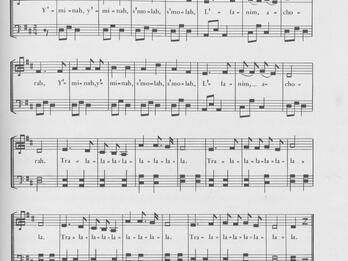Suffering and Heroism in the Jewish Past in Light of the Present
Antek Zuckerman
Eliyohu Gutkowski
1940
A major segment of the Jewish people—the Jewish communities in Western and Central Europe—is today experiencing one of the most difficult moments in all of Jewish history. Although we Jews as a people are accustomed to difficult trials, the current troubles surpass the previous ones in many respects. They exhibit a new [ . . . ] will to oppress and…
Creator Bio
Antek Zuckerman
A hero of Jewish resistance and survivor of the Warsaw ghetto uprising, Antek (Yitzhak) Zuckerman was born in Vilna. He was a leader in the Zionist youth movement He-Ḥaluts. When Jews were confined to the Warsaw ghetto, Zuckerman was sent to the “Aryan” sector as a liaison with the Polish underground and smuggled arms to Jewish ghetto fighters. After the death of the ghetto’s leader Mordecai Anielewicz, Zuckerman was appointed commander of the Jewish Fighting Organization (ZOB). He moved to pre-state Israel in 1947 and was a founder of Kibbutz Lohmei Hageta’ot and the Ghetto Fighters’ House Museum.
Creator Bio
Eliyohu Gutkowski
Eliyohu Gutkowski was a teacher and archivist in the Warsaw ghetto. Originally from Kalvarija (now in Lithuania), he was educated in Łódź and later in Warsaw. Gutkowski was active in the Right Po‘ale Tsiyon movement. Along with Antek Zuckerman, he compiled a Yiddish anthology of Jewish history, Payn un gvure, for educating young people clandestinely in the Warsaw ghetto. The anthology included readings from the Jewish past about Jewish courage and Jewish martyrdom and became one of the earliest symbols of cultural resistance in the ghetto. Gutkowski was also on the executive committee of Emanuel Ringelblum’s Oyneg Shabes archive. Gutkowski did much important work for the archive, including key studies about economics. He was also a liaison to Zionist youth movements, especially Dror. Gutkowski was killed, together with his wife and son, during the ghetto uprising in 1943.
Related Guide
Destruction, Rebirth, and Cultural Thought
The years between 1939 and 1973 witnessed unprecedented tragedy and transformation for the Jewish people.
Related Guide
The Holocaust: Years of Catastrophe
Jewish writing in Nazi-occupied areas documented ghetto life, moral questions, and Jewish identity, while writers in free zones grappled with the unfolding tragedy.
Language:
Places:
You may also like

Palestine Dances!
The Book of Valor
Ghetto Folklore
Let Laughter Ring
Guidelines for the Study of the Warsaw Ghetto
- WorkersHandicraft and small industry: guilds (tsekhn)Trade and industry under Aryan trusteesFree professions: doctors, lawyers…


